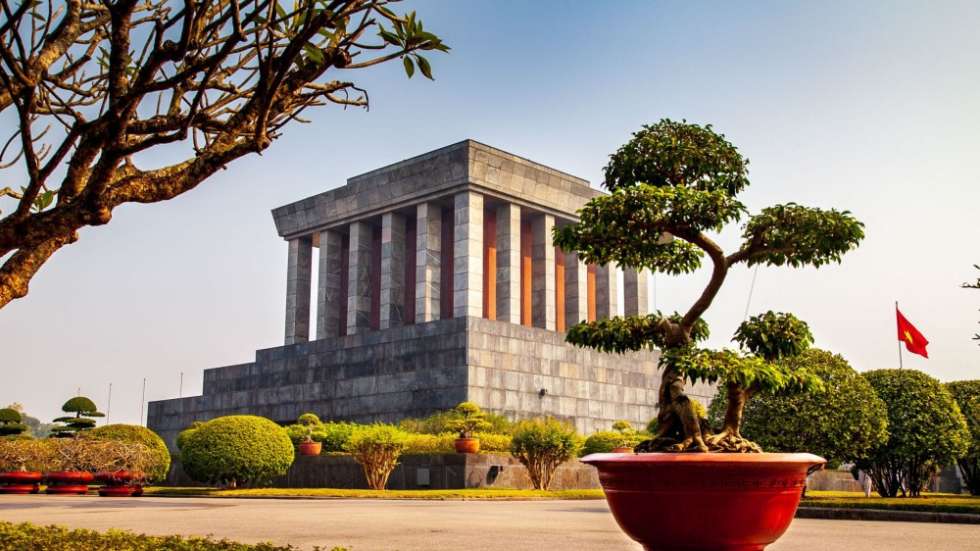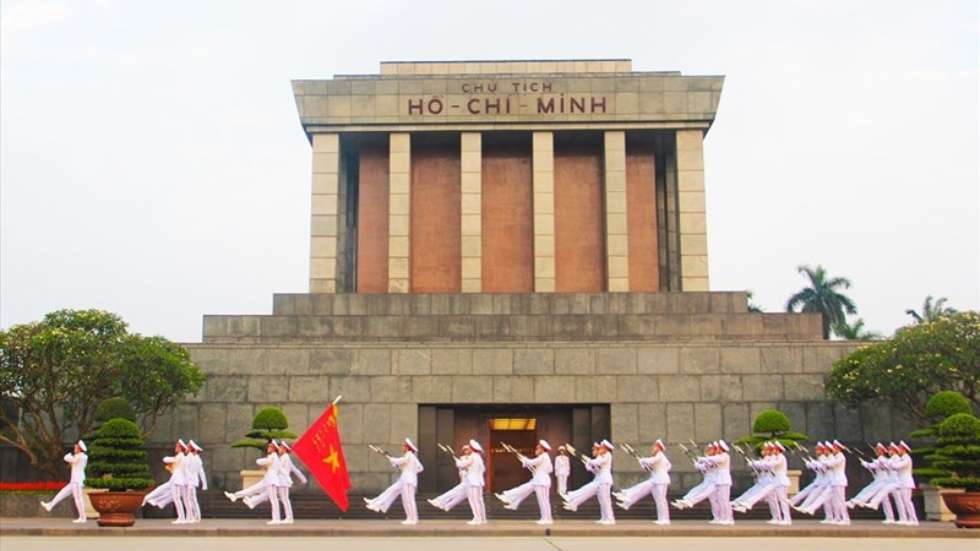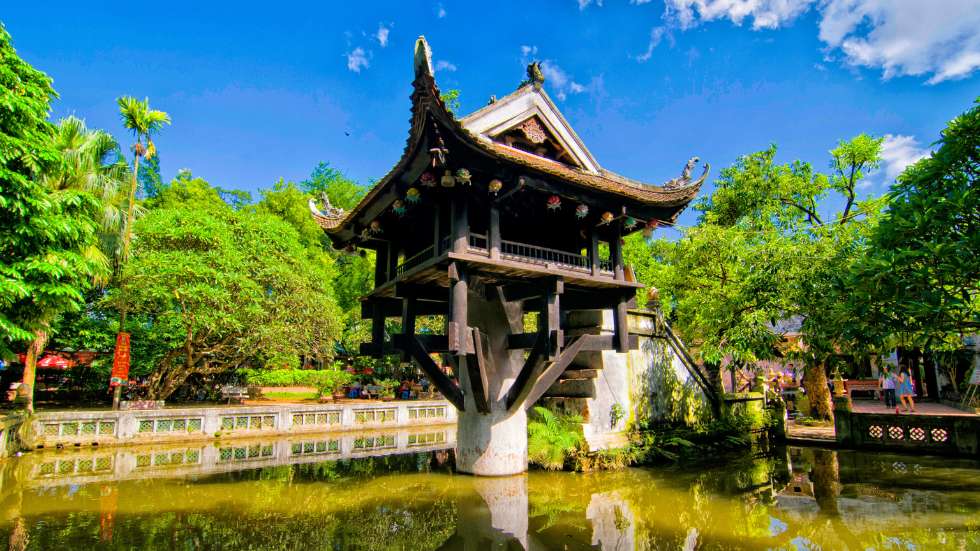LOGIN - TOURISM PROFESSIONALS
Trusted & professional DMC & Tour Operator in Vietnam
WITH A PROFESSIONAL ACCESS, YOU WILL HAVE ACCESS TO:
- Our complete production (tours, excursions and personalized modules).
- Our Toolbox (unique documents about each of our destinations that will help you in providing detailed information to your clients).
- Our highlights, recommendations, newsletters and many other practical contents.
How To Visit Ho Chi Minh Mausoleum
Welcome to our guide on Ho Chi Minh Mausoleum, one of Hanoi’s most iconic landmarks. This impressive monument not only honors the revolutionary leader but also embodies the deep national pride and rich history of Vietnam. As you explore its grand halls and solemn surroundings, you will learn about the man behind the legacy and the reasons why the mausoleum stands as a national symbol. We hope you enjoy this journey into the heart of Vietnam’s past, and we offer tips to help you make the most of your visit.
Overview of the Ho Chi Minh Mausoleum
About Ho Chi Minh
Ho Chi Minh is one of the most revered figures in Vietnamese history. Born Nguyen Sinh Cung, he dedicated his life to fighting for Vietnam’s independence and unification. We admire his simplicity, determination, and love for his country. His leadership during the struggle for independence has made him a symbol of hope and resilience. The mausoleum stands as a tribute to his lifelong efforts to build a free and united nation—a true icon whose life story continues to inspire millions.
About Ho Chi Minh Mausoleum
Ho Chi Minh Mausoleum is an architectural marvel that blends simplicity with grandeur. The structure is built from solid stone and concrete, giving it a timeless and sturdy appearance. The building’s design is meant to reflect the humility and modesty of Ho Chi Minh himself. Large, imposing steps lead to a solemn hall where his embalmed body lies in state, symbolizing both reverence and respect. The mausoleum’s spacious, quiet interior contrasts with its exterior’s monumental scale, making it a place where visitors can reflect and feel a deep connection to history.
The mausoleum is part of a larger complex that includes several other historical relics, such as Ho Chi Minh’s Stilt House and the Presidential Palace. This campus of monuments provides visitors with a comprehensive look at Vietnam’s revolutionary past. Each relic tells its own story, and together they create a narrative of struggle, triumph, and national pride. We recommend taking the time to explore the entire complex—it’s a full-day journey through history that you won’t soon forget.

Source: Internet
Purpose and Significance of the Mausoleum
Why the Mausoleum Was Built
The Ho Chi Minh Mausoleum was built to honor the revolutionary leader and preserve his legacy for future generations. Constructed as a place of remembrance, it serves to remind us of the sacrifices made in Vietnam’s struggle for independence. The decision to create this monumental tomb was influenced by both historical events and political aims, ensuring that Ho Chi Minh’s contributions remain central to the national identity.
Historical and Political Reasons
Over the years, the mausoleum has become a powerful symbol of Vietnam’s revolutionary past. It was built to reflect the unity and strength of the Vietnamese people in the face of adversity. We see it as a monument that celebrates not just a man but the collective spirit of a nation that fought for freedom. The Mausoleum’s imposing structure and solemn atmosphere remind visitors of the sacrifices made for independence and the continuing journey toward progress.
Since its construction, Ho Chi Minh Mausoleum has undergone several renovations to preserve its appearance and integrity. Key historical milestones include its initial completion in the 1970s and subsequent updates to improve visitor facilities and ensure the building’s safety. These efforts have helped maintain the mausoleum as a revered site that continues to reflect the values of Vietnam.
We find it inspiring that, even as the country modernizes, great care is taken to preserve this symbol of the nation’s history. Each renovation is a reminder of the ongoing commitment to honor the past while moving forward.
Cultural Symbolism and National Pride
For many, the Ho Chi Minh Mausoleum is a source of national pride. It embodies the ideals of humility, resilience, and revolutionary spirit. The mausoleum is not just a tomb—it is a place where citizens come to pay their respects and feel connected to the legacy of a great leader. We believe that this cultural symbolism plays an important role in uniting the country, as it serves as a daily reminder of Vietnam’s enduring commitment to independence and progress.

Source: Internet
The Mausoleum as a National Monument
Today, the mausoleum stands as one of Vietnam’s most important national monuments. It attracts visitors from all over the world who come to learn about Ho Chi Minh’s life and the country’s revolutionary history. The site is carefully maintained and is surrounded by other historical relics that together form a campus of national remembrance. We see the mausoleum as a cornerstone of modern Vietnam—an educational and inspiring site that draws millions of visitors each year.
How to Get to Ho Chi Minh Mausoleum and Nearby Attractions
The mausoleum is located in Ba Dinh Square in the heart of Hanoi, which makes it easy to reach from almost anywhere in the city. If you’re staying in the Old Quarter or around Hoan Kiem Lake, you can take a short taxi or Grab ride to Ba Dinh. Many visitors also choose to explore on foot if you enjoy a leisurely walk through Hanoi’s vibrant streets. Several bus routes pass through the area as well, making public transportation another convenient option.
Nearby Attractions of Ho Chi Minh Mausoleum
While at the mausoleum, take the opportunity to explore the entire campus of historical relics. Nearby, you will find Ho Chi Minh’s Stilt House—a modest dwelling that offers insight into his simple lifestyle—and the Presidential Palace, which stands as a reminder of Vietnam’s past political power.
Ho Chi Minh’s Stilt House: Just a short walk away, this modest residence offers a glimpse into the simple lifestyle of the revered leader.
Presidential Palace: Also in the vicinity, this grand building reflects Vietnam’s colonial past and political history.
One Pillar Pagoda: A beautifully unique temple with a rich history, perfect for a quiet moment of reflection.
Ho Chi Minh Museum: For those who want to dive deeper into the revolutionary history, this museum offers fascinating exhibits.
We suggest creating a full-day itinerary that combines your visit to the mausoleum with these nearby landmarks. This way, you can enjoy a complete historical experience that gives you a deeper insight into Vietnam’s journey from past to present.

One Pillar Pagoda (Source: Internet)
Practical Visitor Information That You Should Notice
Best Times to Visit Ho Chi Minh Mausoleum and When to Avoid
To truly appreciate the Ho Chi Minh Mausoleum, we suggest visiting early in the morning when the weather is cool and the crowds are thinner. The mausoleum is a popular site, so weekdays are generally less crowded than weekends. We advise avoiding public holidays when many local visitors come to pay their respects, as this can make the experience less peaceful.
Visiting Hours
The mausoleum is usually open to visitors from 8:00 AM to 11:00 AM on weekdays. We recommend arriving a little early to get a good spot for quiet reflection and photography. Planning your visit during these hours ensures a more relaxed experience, free from the rush of larger crowds.
What to Wear and Visitor Etiquette
When visiting the mausoleum, it is important to dress modestly. We suggest wearing long pants or skirts and shirts with sleeves—no shorts or tank tops. The site is a place of solemn remembrance, so respectful behavior is expected. Keep your voice low, avoid loud conversations, and be mindful of photography restrictions inside the main hall.
We also recommend following any instructions provided by the staff. This respectful approach will enhance your visit and ensure that you fully appreciate the historical and cultural significance of the site.
Conclusion
Ho Chi Minh Mausoleum is a profound tribute to one of Vietnam’s greatest leaders. Its grand architecture, deep symbolism, and historical significance make it an essential destination for anyone interested in Vietnam’s revolutionary past. We encourage visitors to explore the mausoleum and its surrounding relics respectfully, to listen to the quiet stories of the past, and to feel the pride that has shaped modern Vietnam.
When visiting this national monument, you not only learn about the legacy of Ho Chi Minh but also gain insight into the enduring spirit of the Vietnamese people. Enjoy your journey through history, and let the mausoleum inspire you with its timeless message of resilience and hope.
.jpg)
.jpg)
.jpg)
.jpg)
.jpg)
.jpg)
.jpg)
.jpg)
.png)
.jpg)
.jpg)
.jpg)
.jpg)
.jpg)
.jpg)
.jpg)
.jpg)
.png)
.jpg)